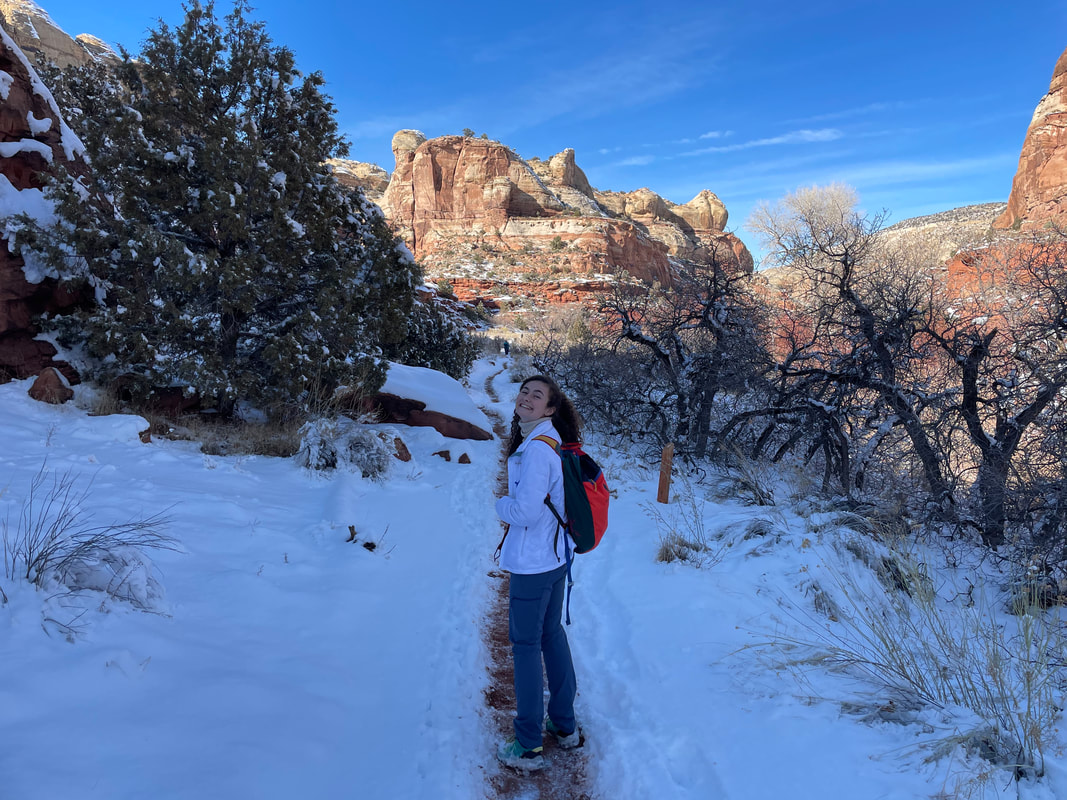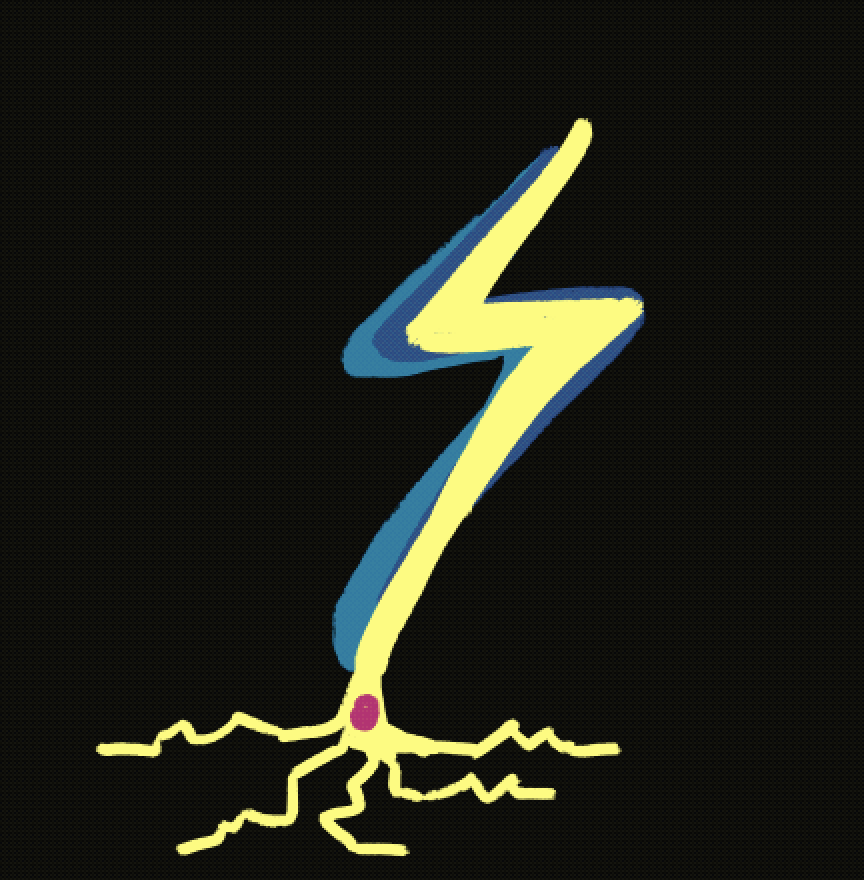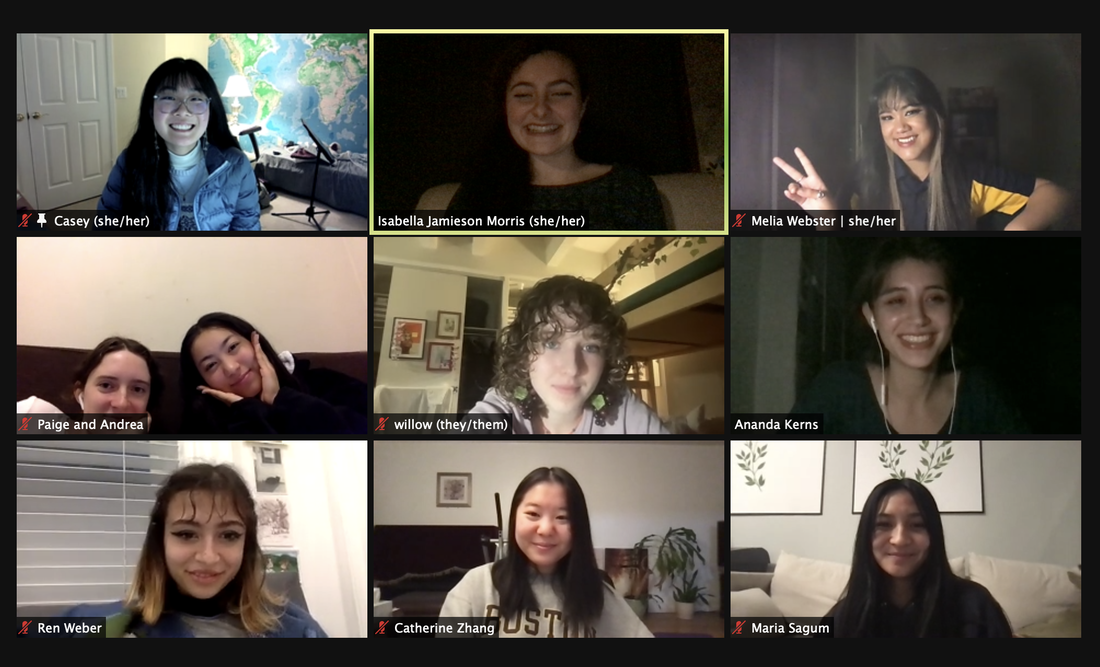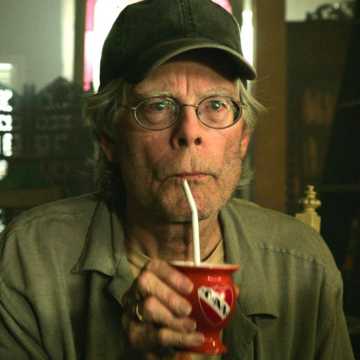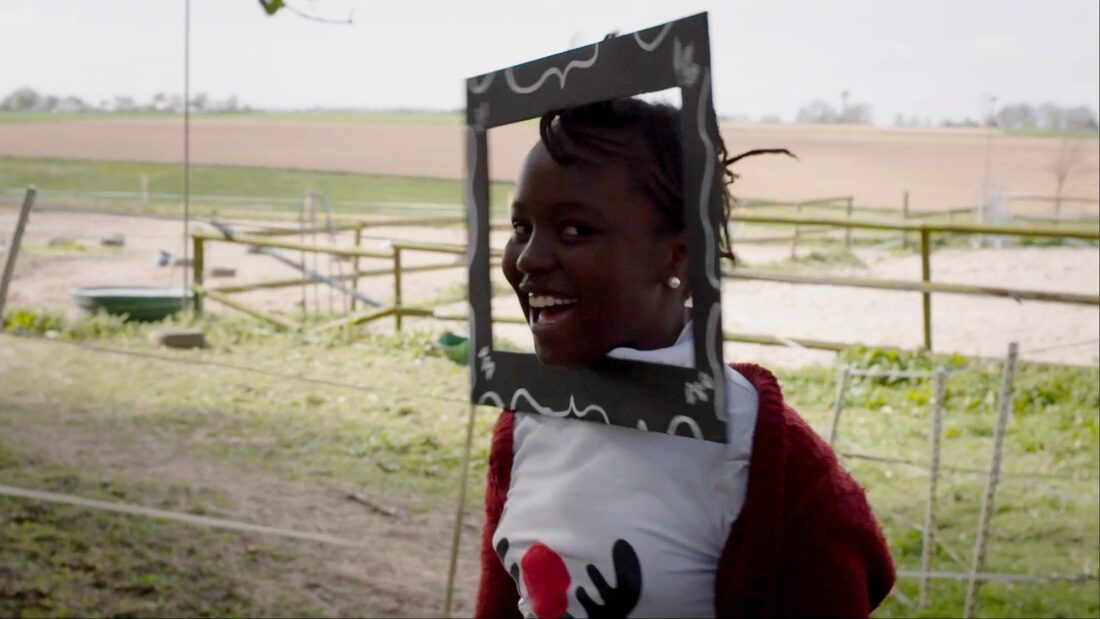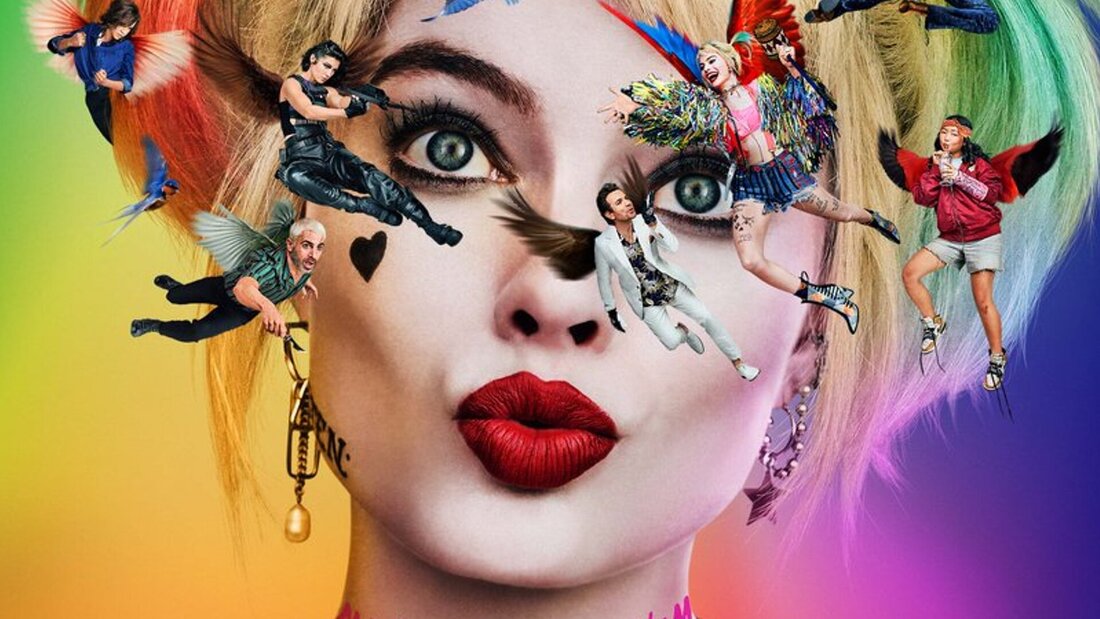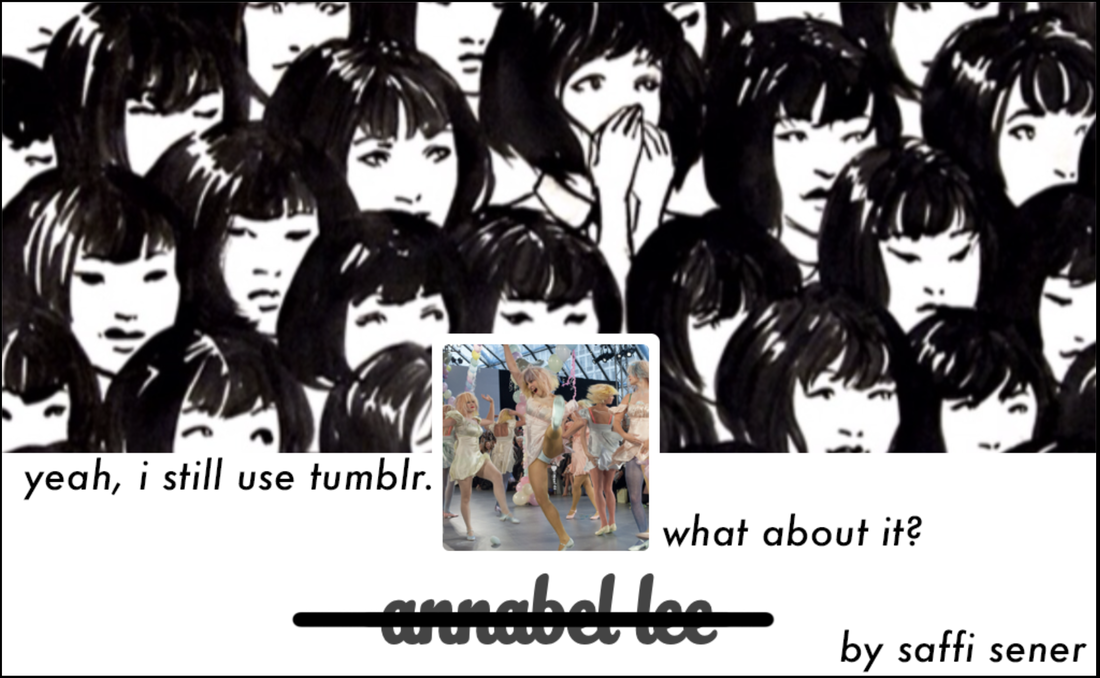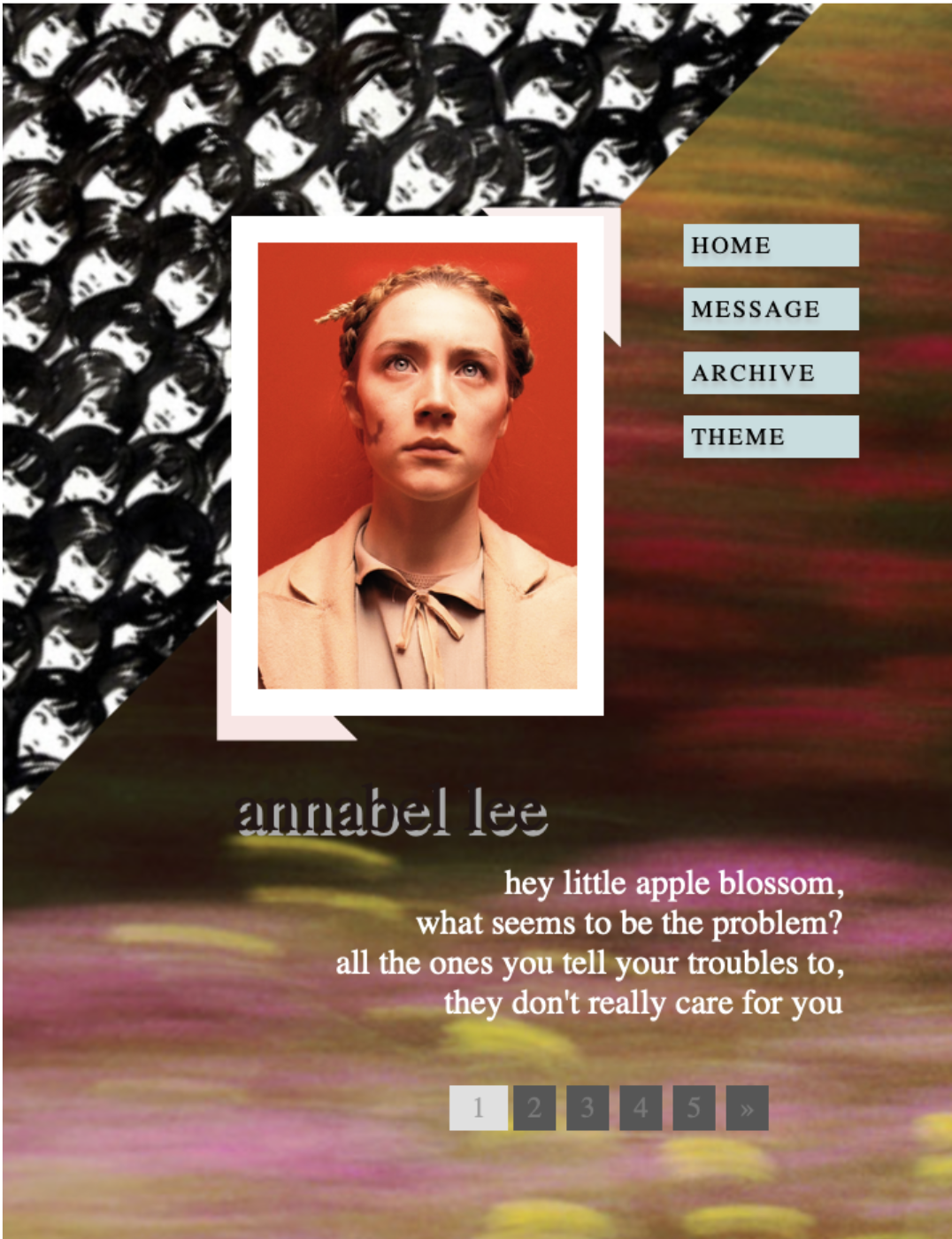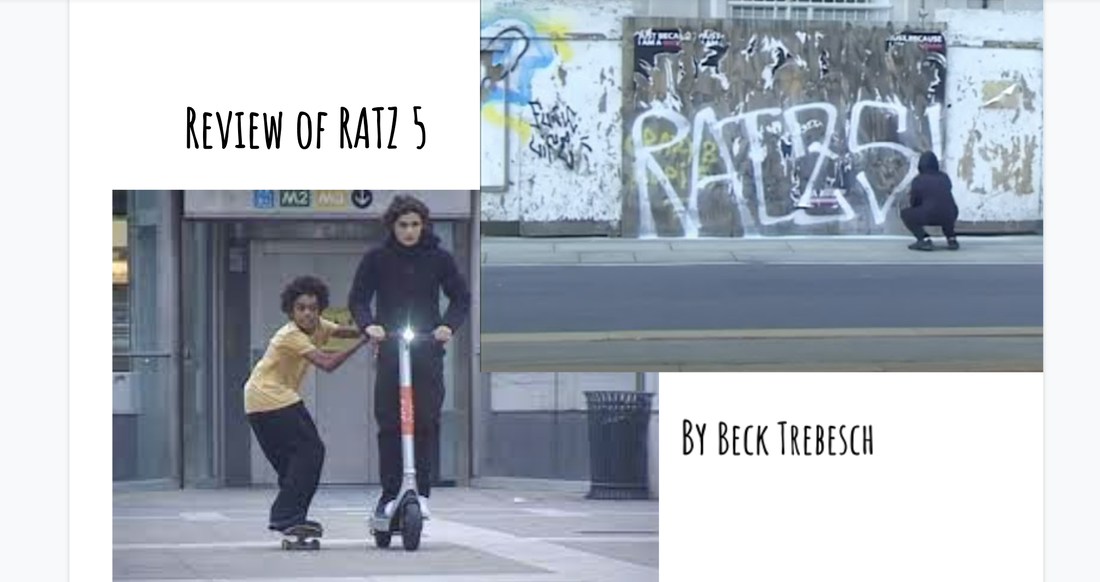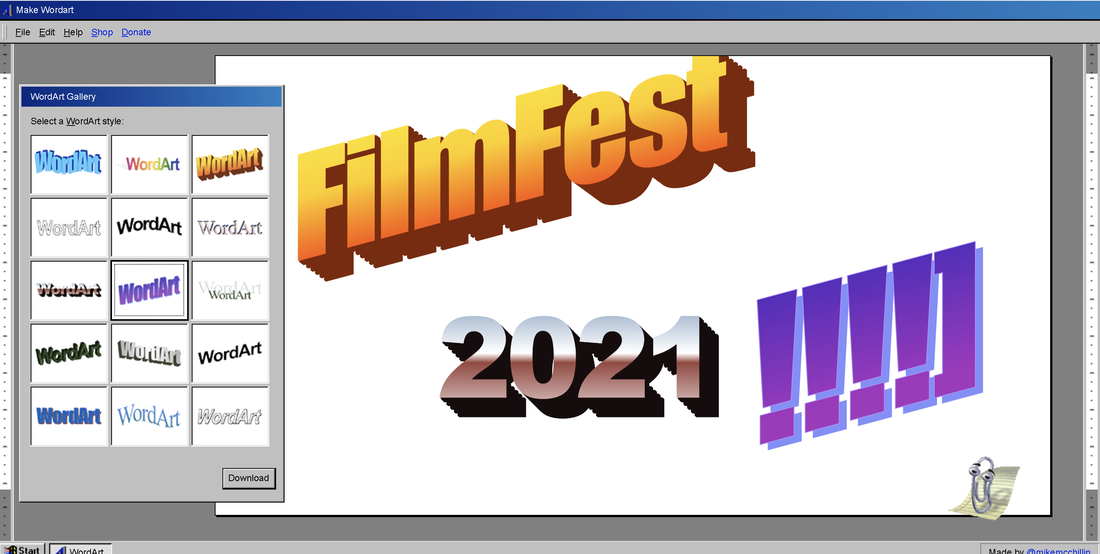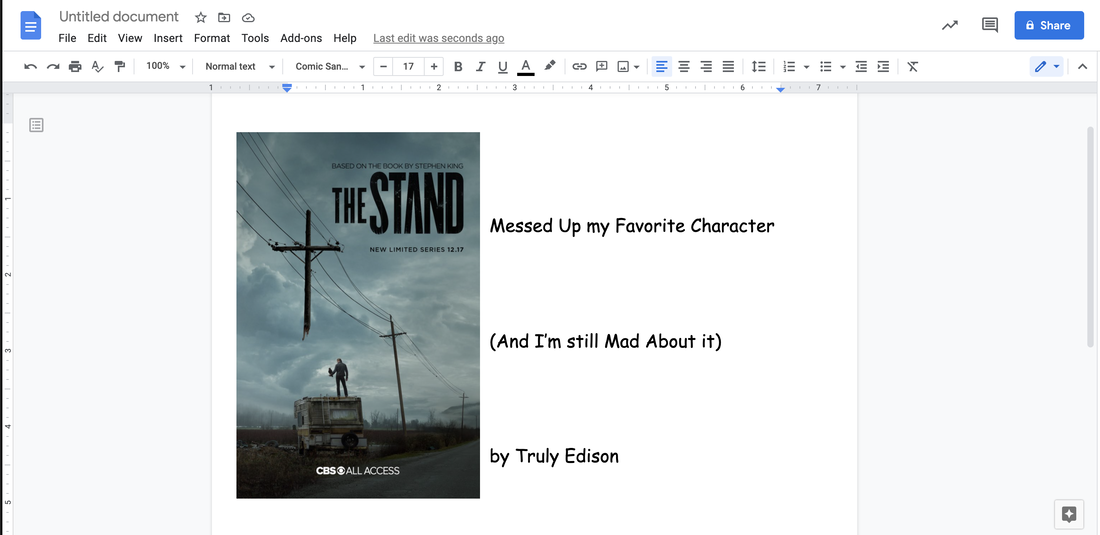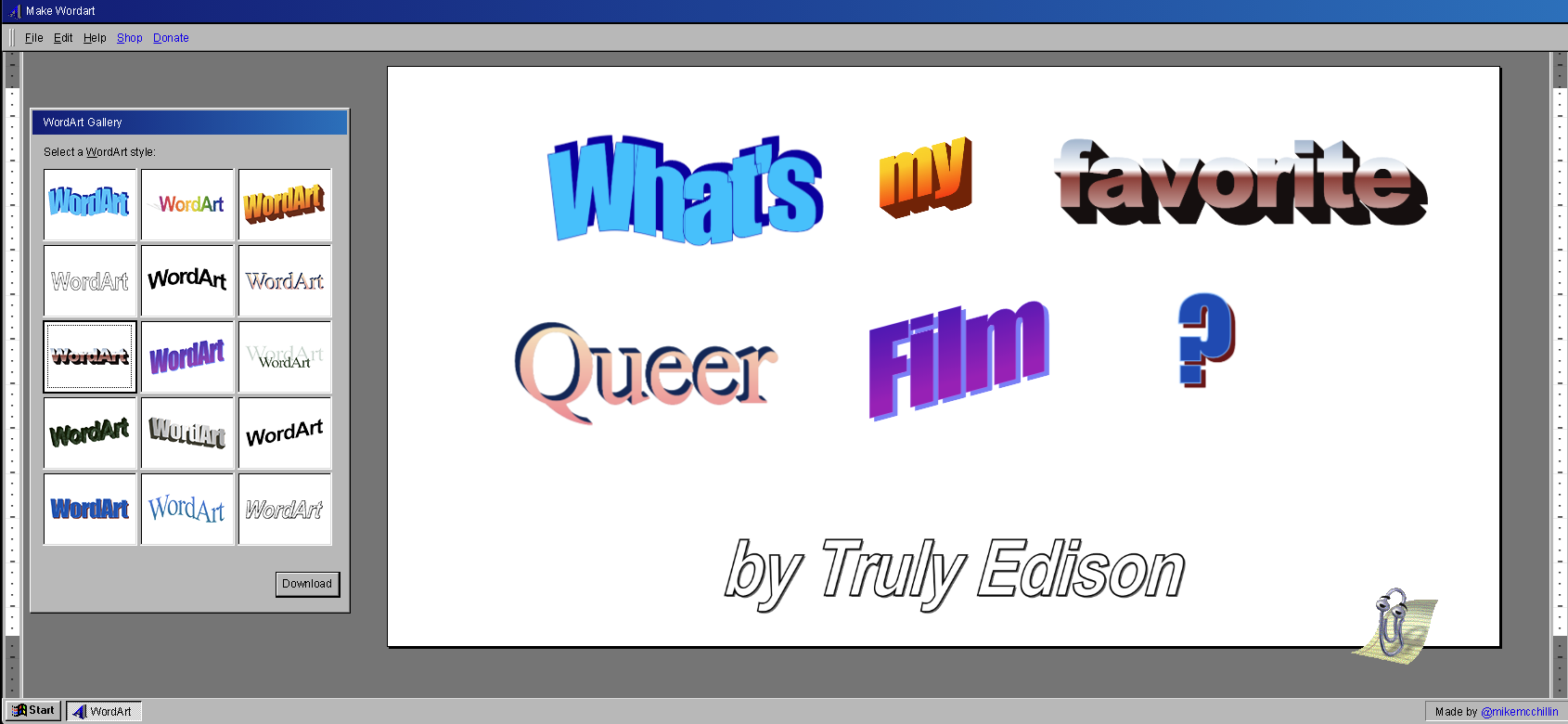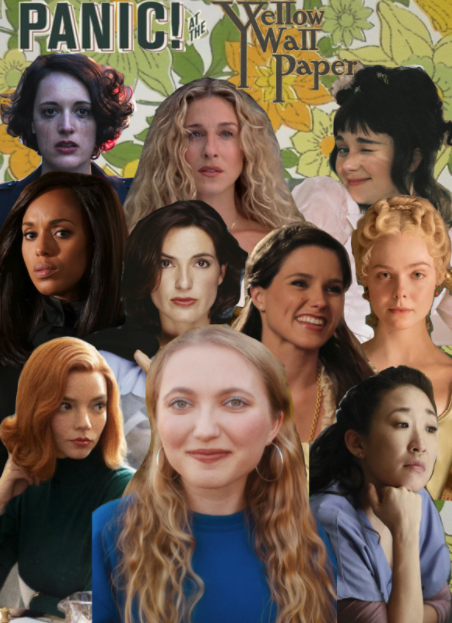|
by Khaled Alqahtani Reinnervation (noun): restoration, either spontaneously or by surgical grafting, of nerve supply to a part of the body from which it has been lost. The ongoing pandemic has reshaped our understanding of collectivity. As governments and institutions continue to fail people around the globe, independently-run organizations, collectives, and publications have been at the frontier of mutual-aid efforts, community organizing, and the fight against widely-spread misinformation. One such platform advocating for collectivity as the only possible way for shared healing is Reinnervate, a community art platform and publication inspired by our bodies’ ability to reinnervate and heal. Isabella Jamieson Morris, a third-year student studying molecular and cell biology with an emphasis on neurobiology, founded Reinnervate to create an experimental and multimedia space for creatives to explore the connections underlying anatomy, bodies, plurality, and community. She believes this exploration is an attempt for us as humans with a shared anatomy to reinnervate wounds caused by our shared struggles. What ignited the idea behind Reinnervate? From the beginning, Reinnervate was supposed to be an avenue, or rather a multitude of ways, for anyone to get involved in doing something [anything]. It was the summer of 2020, and I think more than anything it was the ultimate product of prolonged isolation and a disturbing confrontation with complacency. After having spent the first half of the year becoming acquainted with and embedded within the UC Berkeley community (one of the most diverse communities I have ever encountered with regard to intellectual interest, talent, experience and aspiration), the sudden social isolation brought on by the pandemic was a shock. An experience that I’m sure that any single one of us could attest to. The following social upheaval, mass-mobilization and mass-reflection brought on by the poignant response of millions to the unjust treatment of George Floyd during the Black Lives Movement that summer proved an impetus for the creation of Reinnervate. Suddenly, in sharp contrast to the numbness that had characterized the preceding months, horror, empathy, and anguish surged. Restlessness came to a head. Reconceptualizing positionality, the question of what each of us could do to remedy the situation we all found ourselves implicated in together, became a super salient issue. I couldn’t find any way to deny any longer that I needed to do something [anything]. Though I knew that I couldn’t speak for anyone else, I saw what others were doing already: organizing, sharing information, starting their own mutual aid projects, collecting donations through the sale of their artwork. And I just thought, why not make it easier for anyone to take part in this? Why not try and create a space where all of these efforts are collected and built upon? Why not make it a website? At the same time, this idea of the collective and the individual, unified in the notion of a “body” began to align itself in my head with this idea of numbness and feeling and connection. From there the extended analogy of reinnervation, which now centers our efforts as a student organization at UC Berkeley, began to develop. Over the past year, that idea has been restructured, refined and reconstituted due to the contributions of each and every one of our members, contributors and friends that have given their own feedback and effort to make Reinnervate into what it is now. As you started creating this platform from scratch, what helped and inspired you to create in its current form? Just as reinnervation biologically is a restitutive process, the process of creating a truly accessible and functional artistic platform to sponsor and repair social connectivity is restitutive and ongoing. The website itself has passed through many iterations before arriving at the form it now occupies. Similarly, we reviewed many different versions of the zine before we arrived at the final version that is now in print. The creation of the website began with many nights of experimentation, where it would just be me in bed, clicking into the wee hours of the morning: tweaking small details, deleting and recreating pages, and trying to formulate in my head what I wanted this website to look like and feel like. I was obsessed! I tried to figure out how to make the site as accessible as possible, while still structuring it in a way that would allow it to serve the unique purpose I had envisioned for it. Finally, I arrived at a form I thought was structurally sound (for the most part) usable. From the start however I began to realize that the only way this entire idea would ever fully come to fruition was through the contributions that all those that used it would bring. I anticipated many changes to come, but I was happy that at least now it seemed ready to begin that process of adaptation. After initially sending that version of the site to my closest friends, we truly started on the path to creating Reinnervate. From the start, everyone was supportive and that really made me excited! After going through the process of establishing Reinnervate as a registered student organization at Berkeley and defining our goals for the year we were able to work together as a team, even as we were separated by the conditions created by the pandemic, to make the zine and to raise over $265 for a whole range of organizations operating locally and globally! Fundamentally, the driving force behind the Reinnervate (which has guided its passage through many iterative forms) is the solid team of people who have worked extremely hard to build it from the bottom up and make it what it is now. What does Reinnervate offer to creatives both at UC Berkeley and beyond? Reinnervate operates as an online platform and as a tangible and supportive collective of students. These two modes of organization allow us to offer creatives both exposure to the international online community on our website (in the form of our digitally published literary magazine and our online shop) and connection with other creatives through the events that we host and the community that we try our very best to cultivate. We welcome submissions from creatives at other universities as well as within the local community. Our events are open to the entire university community as well. We are open-minded and excited to help creatives start their own long term projects to address pervasive social issues. Our goal is to make participation as easy and accessible as possible and to create a community of people that can support each other and feel engaged in things that they care about. As a platform that exists on the intersection of biology and art, what distinguishes Reinnervate from other art collectives? A unique and central component to Reinnervate is the integration of the sciences and the humanities. As a neurobiology major, I have always felt that the mode of thinking and language offered by biological study is universally applicable. Networks are central to our current understanding of biology. The precision of language required to study them and to understand the exact mechanisms by which the millions of components that make up any organism or ecosystem are connected is necessarily rigorous. Yet, the language itself is also limiting and extremely inaccessible to those that don’t have a background in biology or the sciences so the fascinating connections that can be made between the arts and the sciences, I think, are often missed! As an organization, we try to integrate scientific and artistic influences in order to offer an environment where discussion about the intersections between the two fields of study and practice can help inform our understanding of our own individual roles in our communities. In this way we offer a space where those with a variety of backgrounds and interests can learn from each other, and the arts and the sciences each inform each other to the fullest extent possible (at least, this is the goal!) We believe that anyone with an interest in taking part has their own insights to offer and welcome everyone to contribute their own knowledge and perspective. What is the importance of independent, student-run organizations?
Independent, student-run organizations have the unique opportunity to act within a rich matrix of social connectivity and intellectual engagement which can lead to any assortment of shared pursuits. At the intersection of academic and social life, they are backed by the resources that the university provides to all students, and yet are able to retain the autonomy necessary to maintain the integrity of their mission. We can create a fun and supportive environment for our fellow students, while we steadily work towards our goal to integrate ourselves more and more within our local and international community and thus maintain the integrity of our mission: reinnervation. Besides being a publication, what other services does Reinnervate offer? Reinnervate offers the opportunity to sell your artwork and raise money for any nonprofit organization of your choice. It also enables anyone to become involved in planning workshops for the UC Berkeley creative community and organizing volunteering events for students. In addition to all of that we aim to inform our members to the best of our ability of current artistic and scientific events and opportunities in the Bay Area. What are some of the projects you are currently working on? Submissions are now open for this semester's zine. We are just now starting the process of the Second Issue’s publication, and that is just one of our many ongoing projects. The online shop is a continuous project where we are fundraising for a host of different organizations, but we are also looking into the possibility of holding a creative fair where these efforts can be translated to the in-person environment. We would love for it to transform into an event where organizations campus-wide are invited to participate and sell artistic goods to raise funds for their respective organizations and projects. While we are still in the incipient stages of this project we are excited for it to develop further as the semester goes on. We will also be holding workshops this semester where we will provide materials and introductions to various artistic skills for creatives on campus that want to connect with others and make things together. Our first workshop will be a crochet workshop where we will be teaching the basics of crochet and starting what will hopefully be an ongoing project of the creation of a “walk-in brain” constituted of crochet neurons made by our members. We are in the midst of planning our three other workshops that will follow over the course of the next year. Overall, we are very excited for our first in-person semester and are optimistic for the future of each and every one of the projects we are taking on together! Visit Reinnervate’s website and follow them on Instagram for further information regarding zine-submissions, social events, workshops, and more!
0 Comments
by Truly Edison Last semester I wrote a pretty scathing post about The Stand (2020) and its treatment of one of my favorite characters in comparison to its 1994 adaptation and source material, the 1978 novel of the same name. Well, over the summer I had a lot of time to reflect on myself and my thoughts and feelings about the works of art I’ve engaged with; I spent some time in nature as a camp counselor before almost immediately being fired, hung out a lot with my extended family, and all around disconnected a little from the internet and social media much to my benefit. And after this period of deep consideration, I’ve come to the conclusion that I’m still definitely a hater and every Stephen King adaptation from the last decade has pretty much sucked so far.
Think about it: Carrie (2013) should have been correctly identified as Patient Zero once they cast Chloe Grace-Moretz. Pet Sematary (2019) was a joke. The Dark Tower (2017) bombed so hard they had to retcon their entire Stephen King Cinematic Universe. I wasn’t even particularly wowed by IT (2017), and IT Chapter Two (2019) is one of the few movies in my life I actually regret paying money to see. I thought Mike Flanagan did an admirable job on Doctor Sleep (2019) and Gerald’s Game (2017), but that’s a pretty sad return on the sheer amount of recent adaptations, not to mention the amount that are still on the way. So like, what's been in the water? It’s not like Stephen King’s books are a no-man’s-land for film adaptations--The Shining (1980), anyone?—so why haven’t we been able to get our act back together? Some of the problem may be rooted in the books themselves. It’s an open secret that King doesn’t outline when he writes, and that possibly combined with his destructive drug use in the 1980s means that a lot of his novels end in… Very Unique Ways. It’s actually something I genuinely enjoy about his work—one of my biggest disappointments with IT Chapter Two was that its stupid ending wasn’t the stupid ending from the book I love—but I’m usually in the minority on this. Even the most die-hard of King fans tend to agree that the guy can’t write an ending to save his life. And if superfans aren’t even happy with them, how the hell is a major movie studio going to make it work for the masses? It puts them in a tough position to either roll with whatever wacky bullshit King wrote or decide that they can come up with something better (and more marketable) than The Master Of Horror. Most opt for the latter, which I think is a mistake. It takes these really fascinating—if sometimes out-of-left-field—narrative choices and reduces them to tropes and formulas already guaranteed to get clicks on Netflix and butts in cinema seats (pre-pandemic, anyway). There’s also the fact that Stephen King’s books are often full of content that would just be extremely unpleasant—or even possibly criminal—to put on film. King made a name in horror because he was doing things no one had done before, for better or for worse. It’s one of the same points I touched on in my article about The Stand and a character in it that has never made it to the screen; there’s a big difference between what people are comfortable reading and what people are comfortable seeing. And that’s not even getting into the structural barriers of mainstream filmmaking; an NC-17 Stephen King adaptation would be a mind-boggling loss of potential profit. It makes sense why a big studio might not want to even risk that sentence from the MPAA. Sheer content aside, a lot of his novels are also just genuinely upsetting. I gave Pet Sematary (2019) a hard time, but I actually don’t know if I would want to see a film accurate in tone to one of the most emotionally devastating novels I’ve ever read. As a general rule, people watch mainstream movies to be entertained, and the days of a Stephen King novel being adapted into an art film are long over (if they were ever here at all). The radical aspects of King’s work don’t just stop at horror content, either. Two of my favorite characters he’s created, Harold Lauder from The Stand and Arnie Cunningham from Christine, show off some of his fascinating cultural boundary-pushing in ways that still land today. They’re both teenage boys with low self-esteem from chronic acne and body-image issues: Harold’s overweight and Arnie’s tall and scrawny. They also both go on downward mental spirals to become late-stage antagonists before meeting a tragic end. This is pretty standard narrative fare, but the thing that turns it on its head is that both these characters’ declines are signaled by them becoming more conventionally attractive. Harold loses the weight, Arnie gains some muscle, and both of them clear up their skin. This is a complete disruption of the usual cultural scripts we have around bodies and mental health, especially in Harold’s case; how many times have we been told a character’s depressed or in a bad place through their weight gain? It’s also a facet of both works that has never been tackled in an adaptation before—both versions of The Stand cast a thin actor for Harold from the get-go, and you won’t see a lick of acne in those or in John Carpenter’s Christine (1983). It’s not that I necessarily think a filmed version of The Stand should have an actor change weight for a role, or that this is necessarily a contemporary problem--Christine is nearly 40 years old. It’s not even that I think every Stephen King film should be a viscerally upsetting grindhouse splatter fest (though maybe, like, a little would be nice). Moreso, I think it speaks to the cultural double-bind of Stephen King as a household name with books that are decidedly not for the household. The unique and shocking qualities of his work that put him on the map in the first place are the very same things that have to be suppressed to keep their adaptations easily accessible and exponentially profitable. Stephen King’s books aren’t for everyone, but the movies are. And this will always lead to the neutering of horror content, the flattening of narratives into formulas, and the abandonment of character arcs that don’t “read” in the dominant cultural understanding. Which is a damn shame, because I REALLY wanted to see James McAvoy beg a giant turtle for his life. by Cambria Meadows Un Film Dramatique is a film by Eric Baudelaire which features the lives of twenty middle-school students from Dora Maar Middle School within Saint-Denis, France — part of BAMPFA’s Documentary Voices series. Although I originally viewed this film for a class, I found myself casually thinking about it on my own time after I had watched it, making me realize how much of an impact the film had on me. A lot of the time, I feel like documentaries attempt to tackle heavy points of contention, and rightfully so. But, what I liked about this film in particular was its ability to address both social and political issues while also maintaining a sense of innocence and light-heartedness, indicative of the 11-14 year olds’ attitudes.
The film’s collaborative aspect between the filmmaker and the young subjects is an essential element of the film, as the space created allows students to not only speak their minds, but also to wield cameras themselves. I think using both footage of the students as well as diary-like videos made by them enables the film to feel very genuine — the audience getting both an outside and inside look into their thoughts. In some of the interview-style footage, it’s inspiring to hear these students have such complex opinions about ideas like racist intentions and the idea of origin; when I was 11 I think the most complicated thing I thought about was pre-algebra. The childrens’ expressive tones and gestures show their convictions on such topics, and they speak with such ease yet sureness. This ability to speak so freely can be attributed to their young age and their carefree mindset, ironically the characteristics which keep them excluded from such conversations with adults normally. Another intriguing aspect of this film to me was the childrens’ role in becoming filmmakers themselves -- Baudelaire allowing them to take cameras home and use them on their own. Baudelaire encourages these kids to film anything, so we see moments like car conversations with parents, dancing and singing, and one girl showing us her pasta-making regimen. Although these clips formally vary from the interview-like conservations the children have when the filmmaker is present, the one continuous line connecting all of the footage is their vulnerability and their ability to open up about anything on their mind, showcasing whatever they want to the camera. Not only does the film allow us to see the kids’ ideas develop in various ways, but we see them actually grow up as well; by the end of the film the students still participating look noticeably older. This film does an excellent job at depicting the complexities of childhood and allows the voice of the film to become intertwined with the student’s own voices, so you feel like you’re hearing them instead of some overarching message. Watching this documentary made me consider childhood and the idea that one day we lose it even though we don't explicitly realize it. This unnoticeable shift becomes visible through the children in the film, as towards the end they begin to censor the way they speak more, one girl redoing one take a number of times. Although the awareness we gain with becoming older is good, I also wonder how it can be detrimental. Even though we can’t time travel back to our own childhoods, this film allows a glimpse into others’. I’m keeping my fingers-crossed about time-travel coming into fruition, but if it never does, this film is a great way to get a piece of that. by Saprina Howard 2020 saw the release of several hit films just before the COVID-19 quarantine dropped. One of the last major films many folks saw in theaters (including myself) was Birds Of Prey, an action superhero film that follows Harley Quinn’s schemes after her break up with the Joker. It’s packed with loudly choreographed fight scenes, witty banter, and memorable color schemes. Though I look back on the experience fondly, I can’t help but to remember an uneasiness that plagued me. The film was cool or whatever-- until a comment so distasteful in one particular scene ruined my mood for the rest of the film. It hijacked my usual post-movie-deconstruction convo as I rode home with my partner that night. What is this scene? A little Context. The film’s villain, Black Mask brags to one of the protagonists, Black Canary, about his various treasures and foreign cultural artifacts displayed around the room. He notices she’s fixated on a mask to which he approaches her and reveals it is from the Congo. He asks her if she’s been there, she replies no, but that she’s heard it’s beautiful. He quickly refutes her claim with one horrendous line, “It’s dirty”. The scene moves on. timestamp: 36:38 - 36:51 Why Does This Scene Ruin The Mood?
The comment may have been a device to help audiences grasp how truly disgusting this villain is. However, the audience would also have to believe the opposite of what Black Mask said, or else he would just reaffirm the audience’s negative beliefs about countries in Africa. The latter is true. This movie isn’t reserved exclusively for audiences who understand that Africa is a continent with resources and cultural wealth, nor that a plethora of its countries are modern societies. Instead, this scene was ingested by ordinary people around the world who believe Africa is a monolithic and poverty stricken ‘country’ where barbarism and tribal warfare are the heights of their civilization. I boldly claim such because I, an African American, sat amongst a mainly white and asian audience in San Francisco where this scene caused the entire theatre to erupt in laughter. They detected humor where I detected insult. No joke was told, but those laughing understood the code implied by stating that the Congo was “dirty”. Humor depends on socio-cultural understandings. As an effect of post colonialism and the ways the world has been conditioned to prescribe little to no value to African culture and Blackness as a whole, it’s common for people to believe the insidious myth Africa is an uncivilized place. The “joke” (statement rather) may have seemed harmless, but it’s really a symptom of a greater issue. It’s safe to say that finding Black Mask’s statement funny required viewers to feel affirmed in their own misconceptions of Africa enough to identify with the line. By laughing they revealed their ignorance. While it is certainly in the writers’ best interests to make believable dialogue, it’s unfortunate that a supremist comment like this is even believable for Black Mask to say. Screenwriters choosing to write things like this is exactly how film perpetuates lies about Africa. Remaining critical and considering the context in which a thing was created is a good way for viewers to remain vigilant to the ways Africa is silently subordinated in our subconscious. Coded language and jokes indoctrinate our thinking and understanding about places we’ve never been, which makes it easier for us to accept myths that justify the racialized world we live in “Believable dialogue” doesn’t need to perpetuate negative stereotypes. With that said, Black Canary’s response was well written-- admitting she’d never been to the Congo but heard it was beautiful. Sure this movie was fiction, but why wasn’t Black Mask’s “believable dialogue” imagined outside of a stereotypical box too? by Saffron Sener When I was twelve, I asked my parents if I could get a Tumblr account. All my friends had blogs, and talked at length during lunch about posts they’d seen, in-jokes they were a part of, how they styled their themes. At first, my father rejected my request on the basis that the platform was “too inappropriate” for someone of my age. You could see anything on there, he said. For what it’s worth, he wasn’t wrong - anyone active during that 2012-2014 sweet spot knows all too well how dangerous it was to scroll through your dashboard in public. That was part of the allure to my almost teenaged brain, of course. I begged and begged, until finally, after my 13th birthday, he relented. My friends and I spent hours finding and uploading the perfect html, customizing our blogs and thinking of the perfect url - mine still looks almost exactly the same as it did when I last renovated it at fourteen. A window into the mind of 14 year-old Saffi. Please don’t go try and find my blog, lol. It’s a secret! It’s been nearly a decade - nine years in November - that I’ve been on Tumblr. There’s been gaps, some nearly six months long, but I always come back. I can’t help myself. The platform has some intoxicating mix of qualities - unique, provocative, nostalgic, alternative, strange - that keeps me under its spell. It wasn’t the same place as it was nine years ago, five years ago, even two years ago, but there are remnants that remind me of the wonderfully vibrant and compelling platform it has been to me. Back in 2018, Tumblr usership took a big hit when site administrators installed draconian anti-nudity regulations on posts, causing most active users to migrate to Twitter. The website had an atrocious pornography problem tending towards pedophilia and assault that led to its removal from the App store, so most users (myself included) were happy to learn that its programmers were going to address how parts of the website were so dark and dangerous; instead, though, they implemented a flawed content-recognition software that automatically deleted blogs with any posts containing identified “nudity” (including anatomical drawings, Renaissance paintings, and b&w architectural plans that it incorrectly flagged, for example). And the bot-porn blogs evolved, still active on the platform but skirting around the ban by links to external websites - the software did little but shuffle the more hardcore accounts off onto other, less policed platforms, failing to confront the root problem. For reasons like the 2018 mass exodus of users, the content on Tumblr is in many ways outdated, a few years behind the neverending daily rounds of Twitter, Instagram, or TikTok. It feels like the only social media platform I can go on and still get genuine posts about SuperWhoLock reblogged onto my dashboard. Yeah - I’m not kidding. And the terrifying ads, which became a prominent and permanent feature of one’s feed around 2017, are both inexplicable and seemingly never related to anything one might search or be interested in. Surreal, almost. It remains, though, my favorite social media platform in terms of personal, individual usage. I certainly don’t use it as much as I did, mostly just hoping on every few weeks when I remember it exists, reblogging about a hundred posts, and then forgetting about it for a few more weeks, but it holds a very special place in my heart. The sheer range of art, thought, literature, media, and music that the platform exposed me to at such a formative time in my life truly defined me. Though it was not always positive - like I said, before regulation, you were bound to see pretty much any explicit image of any nature at some point scrolling through your dash, and there was definitely a Tumblr “ideology” in 2014 that wasn’t the most healthy - it was a way to express and explore myself that I didn’t really have in any other form as a thirteen/fourteen+ year old. Scrolling through my dashboard for hours and searching through blog archives is what introduced me to the world of zines, which is a community I remain active in today. When I started selling my first zines (technically illicitly because yes, I was disciplined for selling zines on my high school’s campus) at fifteen, there was a Tumblr blog to commemorate the moment, and to keep people up-to-date with each issue. And it was on Tumblr that I was able to privately explore parts of myself - like my sexuality - away from the scrutinizing eyes of parents. Posts reblogged to my dashboard brought me to the Queer Zine Archive Project just after I started high school, sparking tons of feelings in my thirteen year old brain that I wasn’t super equipped to handle - I’m glad now, as a twenty-one year-old, that they were swirling around tangentially in my head at that point, though. The first person I came out to was the girl who helped me code my personalized blog, the same theme I have now. I will say: on the flip side of the platform, had Tumblr users extolled a more rational, open, and less problematic governing ideology about queerness, I might have fared a bit better in that realm and avoided repressing those feelings for an additional five years. Haha, maybe in the next life. Now, for better or for worse, I have this strange, wonderful time-capsule of my youth. I never kept a diary or a journal, but I still have my Tumblr archive - and I cherish that shit. I was embarrassing as hell in 8th grade, but I’m so happy that I have this huge collage of images and text and videos that represent my mind, my interests, my feelings at the time. To see the changes over months and years is endlessly fascinating. Unlike Instagram or Twitter, you get to customize almost every aspect of your blog, creating a little space for yourself that feels special and representative in the way I’m sure MySpace did for generations before me. I got my Instagram right around the same time as my blog, and even back as a thirteen year old, I was incredibly conscious of the fact that I carried myself differently on the photo-sharing app; every photo had to appear perfect, I needed to look beautiful, and each post had to get enough likes. My Instagram, which still has some of my photos from 2013/2014, is more sanitized and superficial - it’s a nice photo album, but it never really felt like I was using it for me, rather for the construction of some version of me for other’s consumption. Perhaps this is an individual experience, but I never felt that way on Tumblr. Tangentially, I cared what my (closest) friends might think about what I reblogged, because they were the only ones who had access to my blog; on the whole though, the things on my blog were there because I liked them and I wanted them to be there. I rarely made posts, so there was no reason to care about how many notes a post might get. It was my own little world, and I think I needed that as a preteen, teenager, and even now. by Beck Trebesch
Rat Ratz 5 is a 14 minute skate part released on the Quartersnacks Youtube channel in November of 2020, featuring a talented team of youngsters from Milan, Italy. Posting a 36k view count at the time of writing, Ratz 5 is a charmingly grisly, effortlessly stylish, and undoubtedly promising look into what's to come from the peripheries of the skateboarding world. First and foremost, what the Ratz lack in skating ability, they make up for in creative problem solving genius. One might walk away from a Ratz 5 thinking: “Wow! They really fucked that spot up!!!” And you would be right. I feel in most other instances, this would be to the detriment of the part, a distraction even, but in this unique moment, it comes off as endearing and authentic. The Ratz team finagle every little gap, ledge, and angle at the Mensana in a feat of distinctly urban ingenuity, building on each other’s technical prowess and creativity. There are so few shots in this part that feel the same even if it's the same 3-stair or ledge. Even when it seems the crew is going to run out of features to hit, they manage to pull out a new maneuver to keep the video fresh or in Italian, nuovo (see the 50-50 to late shuv, Rach’s Muska flip, and the back 5-0 to tailslide nose grab combo which is downright electric). As fun and accessible as the skating is in Ratz 5, Brisquit’s unpolished but patient filming and editing is the touch that elevates this video from novel, underground edit to contender for part of the year. Follow cams, side by side, front, back, above, below, you name it. Brisquit got the shot. It may not be as flashy, colorful, or manicured as other skateparts but it's so well-suited to the skaters, the spots, and the scuzzy beauty of Milano. The second aspect of Ratz 5 that has kept me coming back probably once a week since its release is the compositional variation and cross cultural hybridity in just about every sliver of this part. Off rip, the music. Oh yea, this soundtrack fucks. If anyone reading this has also read my Collage review (ski movie), they’ll know how much music choice and sound balance can disrupt a part, no matter the quality of the actual talent on display. In this case, Brisquit loads up his utterly nasty quiver of ‘No Slack in My Mack’ by Lil Ugly Mane, ‘One’ by Ghostface Killah, ‘Für Elise’, ‘Doomsday’ by Discharge, and ‘My Kitchen’ by Gucci Mane and hits pacing and energy dead in the heart. Pairing with the tasteful Supreme garb and variety of Nike Dunks showcased through the entire video, the music has a uniquely American flare (minus ‘Für Elise’ and ‘Doomsday) that shows a keen ear and a sharp eye for the global skateboarding diaspora. Furthermore, given how young a lot of these kids are (I’m talking 13-16), it shows an unspoken maturity, confidence, and sense of community that pulsates through the entire part. I also love the Ratz’ incorporation of graffiti into the part. The motion of the arm arcing bubble letters on abandoned freight trucks, the quip of the can spitting white paint, and the public stealth of the taggers leads to a supremely enjoyable set of moments that whisper volumes about Milan’s underground. Upon first watch, I was left with a few burning questions. Where would I be if I was this cool at such a young age? What’s next from this crew of kick-flipping, cigarette-smoking rabble rousers? Why don’t more people know about this incredible video? And while the jury’s still out on the outcome of my possible foray into a hypebeast-clad street skating career at age 14, we can now confidently speculate on the future prospects of Ratz. It seems (given my Ratz littered Instagram feed) that famed skateboarding filmer/director/editor William Strobeck and the Supreme Crew linked up with the boys in Milan for at least a good month or two, meaning the follow up to Strobeck’s 2019 ‘Candyland’ (the most watched video in our friend group for both unironic and ironic purposes) could be right around the corner. I’ve never been more excited to watch wheels turn and ollies pop! Ratz 5 - https://www.youtube.com/watch?v=dXToyTHS-0s Candyland - https://www.youtube.com/watch?v=Yk1cLKpzHck by Julia Cunningham While only in its third year, the BAMPFA Student Committee’s Student Film Festival has quickly become a beloved event and a mainstay in the BAMPFA Student Committee’s annual lineup of events. Held for the first time in 2019 in the Barbara Osher Theater, it had to be moved online in its second year due to the pandemic, becoming the first of many BAMPFA SC events to be hosted virtually. We are excited and grateful to be able to virtually present the Student Film Festival again this year, with films curated by the BAMPFA Student Committee’s Film Subcommittee and brought to you via a beautiful website designed by UC Berkeley student Timothy Tucker. Of course there would be no film festival without the incredible creativity of student filmmakers. This year’s lineup features 14 films created by student filmmakers from across the Bay Area. There is truly something for everyone in this lineup in terms of length, style, and content. Some films are narrative, others documentary, but many would best be described as experimental or genre-defying. Many of my personal favorite films from the lineup explore personal and vulnerable realities in a stylistically and visually potent way, such as in Dear Commuter, heart whispers, and Telepatía, but all of them achieve this in distinct ways that highlight the strength of the filmmakers’ unique voices. While not curated around any particular theme, I think that many of the films do speak to themes of distance and reflection. Perhaps it is the events of the past year that makes it easy to project these themes onto almost any piece of media, but I also think that it speaks to the individual strength and artistry of these filmmakers that their films, even if not created in the past year, are able to sensitively yet potently resonate with our present moment. I hope you love these films as much as we do, and appreciate these incredible student artists for continuing to create and share their work during these financially, emotionally, and creatively challenging and isolating times. A silver lining of hosting the film fest virtually is that it is available for anyone in the general public! To watch the films, check back into the BAMPFA SC website to be redirected to the official Student Film Festival website. The website will be launching this Thursday, April 8, and there will be a live conversation and Q&A with BAMPFA Student Committee members Collette Keating and Amaris L’Heureux and student filmmakers that day at 7 pm! Happy viewing! by Truly Edison We’re now a little over a month post-The Stand 2020, the latest in a current boom of mediocre big-budget Stephen King screen adaptations that have been the bane of my existence since IT 2017. Anyone who’s talked to me in the last six months has probably heard my tirade against this trend at LEAST once, but the absolute state of The Stand 2020 felt like a particularly personal blow: I’ve been part of a matrilineal legacy of Stephen King superfans ever since my mom got me hooked in middle school with Carrie, and The Stand is her favorite Stephen King book of all time. Naturally, once she was able to convince me to take on the 1300-page behemoth, it became one of my favorites too. We watched the original 1994 miniseries adaptation of The Stand together, and my mom had been hyped up for this new version ever since it was announced a couple of years ago. Needless to say, it was a rough couple of weeks in the Edison household as we watched in growing bewilderment at the miniseries that ended up being produced. For the uninitiated, The Stand details the saga of what remains of the U.S population following a virus that kills 99% of all human life on Earth (and before you ask, yes, the release of The Stand 2020 was pushed back due to probably the worst timing marketing-wise a show could encounter). The survivors eventually form two distinct groups, headed by two mythical figures: the God-chosen elderly Mother Abagail, and the chaotic “dark man” Randall Flagg. These groups ultimately have to face off against each other in a battle of “good” versus “evil” (with all the complications such a concept can have, of course). It’s an expansive novel with tons of characters and locations, sometimes compared to stories like the Lord of the Rings series in terms of sheer narrative scale. Taking that into account, I actually don’t want to bag on The Stand 2020 too hard simply because I think it would be impossible to create a working screen adaptation of The Stand that was any shorter than a full multi-season television show similar to something like The Walking Dead (which, as an aside, I’m surprised has never been pitched; if my mom is any indication, people with disposable income LOVE The Stand). On the other hand, I could probably also write a whole manifesto on everything about The Stand 2020 that made me so mad that I would get an actual headache after watching it sometimes. Luckily for you all, this blog post is not going to be that manifesto. Instead I want to narrow in on one specific complaint, perhaps a universal one for adaptation haters: I didn’t like what they did to my beloved Trashcan Man :( In summary, Trashcan Man (real name Donald Merwin Elbert) is one of the survivors of the virus in The Stand who ultimately allies himself with Randall Flagg’s “evil” side in the final conflict. When he was a small child, his father went on a violent rampage and killed his three siblings, eventually being gunned down by the sheriff of his small Indiana hometown. The impacts of this early trauma manifested in the form of Trashcan Man developing pyromaniacal tendencies: his nickname comes from his childhood habit of setting fires in trash cans. Though this is never explicitly confirmed in the text, many people read Trashcan Man as also possibly being schizophrenic. These effects were only worsened when Trashcan’s mother ultimately re-married to the man who killed his father. As a pre-teen he was institutionalized after burning down an abandoned house, and was subjected to medical abuse for a number of years, including electroshock therapy that severely damaged his memory and cognitive function. After returning to his hometown, Trashcan continued to struggle, forced to drop out of school due to the effects of the electroshock therapy and tormented by the other people in his town who would shout at him in the street and throw things at him. He was ultimately arrested after burning down a church, and begins The Stand shortly after breaking out of prison as the only remaining person left alive there. He then travels to Las Vegas to meet up with Randall Flagg, who communicates with him in his dreams and promises him a better life than the one he lived pre-virus. Without giving away any spoilers, Trashcan Man goes on to play an instrumental role in The Stand’s intense, explosive climax. I think part of why I love Trashcan Man so much is because on paper he reads as a character who could easily be done very poorly; oh look, here we go, another ~craaaazy person~ with violent tendencies. But Stephen King is able to portray Trash with a game-changing amount of nuance and empathy. We get several chapters in which he is the point-of-view character, which allows for a deep engagement with his personality, his insecurities, the ways in which he interacts with the world around him—all things we would expect to get from any character in such a long novel but so often don’t get from characters like Trashcan Man. We can also get a sense that he’s wanted by other characters, and that he has value and positive qualities despite his mental illness. Flagg seeks him out and speaks to him in his dreams because he needs Trash’s ‘sixth sense’ for finding weapons in abandoned West Coast military installations and skill with mechanics and explosive devices (a byproduct of his pyromania) in order to prepare for The Stand’s final battle. Most crucially, as readers we get a sense of the outside conditions that made Trashcan Man the way he is. We see the ways in which he’s psychologically scarred by the events of his father and siblings’ deaths, and the ways in which the people in his life attempt to help him (by institutionalizing him) only to inadvertently put him through even more trauma. Even on top of all of that, we see the ways in which he’s totally rejected by his community and further victimized in the moments where he needs the most support. Trashcan Man is able to be so much more than just a “crazy guy” taking advantage of the apocalypse to indulge in his demented fantasies: this is a vulnerable person who has just been totally let down and treated like shit by other people and by social institutions, who now finds himself in a position where those people and those institutions have gone away and he has the opportunity to live another kind of life. It’s not a perfect portrayal by any means—like pretty much every Stephen King book, The Stand has aged egregiously—but it still struck me as more nuanced and thoughtful than even some media that comes out today. In The Stand 2020, Trashcan Man was portrayed by Ezra Miller, who I actually otherwise really enjoy as an actor; I thought they killed it in We Need to Talk About Kevin as another character with unspecified but intense and violently-manifesting mental health issues. I was especially intrigued because apparently Ezra Miller was given a lot of creative freedom with the role of Trashcan Man, reportedly being a huge fan of The Stand and having their eye on the role for a long time. But what ultimately came out of that take is, uh. I’m just going to link the clip here because I honestly don’t think that I would be able to describe in written words the sheer content of this scene. Be warned if you do click, though—Ezra Miller’s first scene as Trashcan Man isn’t just bad, it borders on genuinely offensive. They put on this erratic gesticulation and this horrible screeching that completely drains the scene of any empathy or character-building that it could potentially put forth. Do we learn literally anything about this guy from this scene? Other than the fact that he’s ~craaaazy~ and really likes fire? There’s no dialogue, no flashback (as is used in this scene’s equivalent in the book), none of the things we might expect from an introductory scene to a crucial character. He’s not even wearing any clothes we could make assumptions about him based on. Trashcan Man isn’t a character here; he’s barely even human. Whereas in the book we get an inward view on Trash, and see through that viewpoint how he’s perceived from the outside, the only perspective we get here is entirely from the outside. We’re being shown Trashcan Man from the vantage point of those in the book who so thoroughly ostracized him, as this grotesque freak show that we’re at best morbidly fascinated with and at worst violently repulsed by. Maybe this would be less of an issue if Trashcan Man had any other key scenes in The Stand 2020. That’s the other thing that bugs the hell out of me about this version of the source material; this abysmal first scene is pretty much all we get of him for the miniseries’ nine-hour runtime. After this he has a brief, hallucinatory dream-interaction with Randall Flagg that...maybe would give us some backstory if literally any one of its hurriedly flashing images were lingered on for a little bit longer? And then he’s pretty much instantly in Las Vegas (where all of Flagg’s other henchmen are disgusted by him, far different from their enthusiastic acceptance of him into their ranks in the book). He “talks” to Flagg (more screeching) for about a minute before he fucks off into the desert for a couple of episodes, not to be seen again until the very end of the series. For a character with such a massive role in the plot, The Stand 2020 reduces him to pretty much a glorified cameo. If the audience had been given a little more time with him, we might have been able to feel connection to and empathy for even this weird caricature that Ezra Miller has created, but we’re not even given the chance to try. Of course, you can’t just blame Ezra Miller for this turning out as a trainwreck, though if their reported love of The Stand wasn’t just a PR thing for the show then I would really like to have a little talk with them about what the hell they thought The Stand was about. Any piece of filmed media gets touched by too many hands to assign blame to one person, which arguably makes it a little worse in some ways, that so many people would have had to sign off on this version of the character for it to avoid the cutting room floor. Part of the trouble comes from the source material, too—the book is just too damn long to properly do in even nine hours! Trashcan Man doesn’t even get introduced until nearly halfway through The Stand. He’s also a character who potentially pushes the boundaries of what can be shown on TV, especially when it comes to his journey to Vegas. There’s a chapter of the book where Trash runs into The Kid, a violent and sociopathic Elvis lookalike who threatens, tortures, and even sexually assaults Trashcan Man while he’s trying to make his way to see Randall Flagg. This is a part of the book that has never made it onto the screen, and was even cut from the original publication of The Stand. I can completely understand why—it’s a bleak and brutal read, one of the most difficult parts of an already disturbing book to get through. But at the same time, it continues to build our relationship as readers to Trashcan Man, and it’s one of the defining moments of his character arc. Making the choice to cut it completely means that a showrunner has to come up with a substitute for the work it does character-wise, which is a hard wall to scale. But it’s not impossible to scale, not in the slightest. There have been passable, or even pretty good, on-screen versions of Trashcan Man in the past. In the original 1994 miniseries he was portrayed by Matt Frewer of Max Headroom fame, whose take on the character I’ve come to appreciate a lot more post-The Stand 2020. For comparison, here’s his version of that introductory scene. For starters, this scene is almost twice as long as Ezra Miller’s introduction to the character, which gives a lot more much-needed time to get to know him. Though Matt Frewer does erratic and repetitive behaviors similarly to Ezra Miller, the movement and vocal stims that he gives Trashcan Man feel much more humanizing—and his version of Trash can actually talk in full sentences like he does in the book! I never thought I would be so excited about that fact, but here we are. But most crucially, we get a sense of where he comes from and what’s happened to him before we meet him in The Stand in the form of the voices of his childhood tormentors that he hears. We even get a reference to being ‘stuck in the nuthatch’ and ‘given a few thousand shock treatments’, which goes completely unmentioned in the extremely brief and confusing bit of backstory we get for Ezra Miller’s Trashcan Man. Of course it’s not given the same in-depth treatment as it gets in the book, but it doesn’t have to be—a little can go a long way. He’s also considerably more present in the 1994 miniseries as a whole, despite it being about 2/3rds the length of The Stand 2020. The 1994 series seemed to have a stronger grasp of Trash’s role in the novel, and organized its structure accordingly. As bad as The Stand 2020’s Trashcan Man is, it somehow feels even worse when you consider the fact that there was a more rounded-out and empathetic portrayal nearly thirty years earlier. Mostly I feel disappointed with The Stand 2020 not just because of my personal attachment to poor Trashy as a character, but because of the ways in which this version of The Stand presented itself as seeking to make right some of the failures of Stephen King’s original book and adjust some of its more problematic elements to run more appropriately in our current year. Like I mentioned earlier, Stephen King books have a tendency to age like milk political-correctness wise, and The Stand is DEFINITELY no exception. Before The Stand 2020 came out, the showrunners talked a lot about the ways in which they intended to rewrite Tom Cullen, a developmentally disabled man in The Stand who in the original text is an unfortunate bundle of ableist tropes rolled up into one kind of cringeworthy package. The showrunners understood this failure of the text and took great strides to correct it in their version. And that effort really shows! Brad William Henke’s version of Tom is honestly one of the high points of the miniseries. But it just makes me wonder why the same care and consideration couldn’t be taken when it came to reinterpreting Trashcan Man. Well, I guess I’ll just have to stick around for The Stand 2041 and cross my fingers. by Truly Edison As a queer person and a film major, I get this question constantly. And when I say constantly I mean CONSTANTLY, as in pretty much the second that someone finds out those two things. And even though I love talking about queer film and will do it pretty much any excuse I get, the more times I get asked this question the more I realize that I actually… kind of hate it. I almost never know what to say, and whatever answer I do come up with almost never feels genuine. I’m not lying, or at the very least not lying on purpose—for whatever reason, the question is a personal minefield I still don’t quite know how to navigate.
Part of it is because I often feel like the term itself, “queer film”, is sometimes so broad as to become nearly unusable. What even is queer film, anyway? Is it film centering romance between two characters of the same gender? If so, what do we make of a film like Gregg Araki’s Mysterious Skin, which is undeniably queer but leaves the relation between its two leads strictly platonic? Is it less queer, or even queer-baiting? Does queer film just mean films with queer characters, then? Then we have to decide what makes a character queer; if that means a character needs to have a specific label they identify with, the scope of queer film diminishes dramatically and unfairly, excluding whole decades of queer-coded film made in an era where explicit representation was impossible. Even more recently, some creators opt to go for a more subdued approach; the criminally-underrated Where The Truth Lies never uses the word bisexual to describe one of its main characters, who sexually pursues both men and women over the course of the movie. How queer is that film? Some recent films have characters who are confirmed to be queer by directors in interviews, regardless of how much that ends up being expressed in the film itself; are those films queer? Then maybe a queer film just needs to have ‘queer themes’, however literally or not those themes are expressed. But in the muddy space between directorial intent and audience interpretation, themes become nebulous and hard to define with any objective certainty. I wholeheartedly believe that Bill and Ted’s Bogus Journey is rife with queer themes (no matter how much my family ribs me about it!); does that make it a queer film, even if the only people who think so are me and my gay friends? Can it work that way? At the same time that ‘queer film’ is so difficult to get an exact grip on, I also often find it hyper-evaluated and scrutinized both within and outside of the LGBT community. The last couple of years have been an all-time-high for mainstream queer representation, which, don’t get me wrong, I think is an amazing thing; we’ve moved firmly out of the era of Cruising and Chasing Amy with a new cultural knowledge of how to portray queerness on screen without demonizing or alienating queer people in real life. At the same time, though, it runs the risk of producing in its wake a body of easily-marketable, unprovocative, ‘safe’ queer films that are stiflingly conscious of not treading on any toes still sore from decades of stereotypes and cliches. I’m happy that Love, Simon is able to exist, but as a film it did no more for me than any straight teen rom-com I’ve ever seen; it spoke to a sanitized, palatable experience that isn’t anything like how I felt in high school. Some part of me can’t help but yearn for the Pink Flamingos days of queer film. As far as we’ve gotten since the invention of film, homophobia isn’t over, not by any means; Love, Simon was banned in multiple countries upon release, and its spin-off TV series Love, Victor was removed from Disney+ due to ‘mature content’, which more often than not in these kinds of situations is code for ‘gay stuff’. Why should we have to flatten the nuances of our lives to create a cleaned-up, desperately inoffensive version of ourselves that mainstream culture and society still doesn’t even really want? In addition to this, the more cultural nuance we gain on how to depict queer life on film, the more that older queer films will start to be reevaluated within the scope of that increased nuance. Revolutionary as Brokeback Mountain may have been fifteen years ago, today it risks ringing a little more uncomfortably as yet another gay tragedy. Every so often my social media feed is graced by the posts of some teenager discovering that But I’m A Cheerleader is a comedy about conversion therapy for the first time, and urging their followers not to watch it as a result. Not that I’m against this kind of reevaluation—I think that when done constructively it’s an incredibly valuable cultural tool, and allows us to have ongoing conversations about media of the past and its shifting roles in the present. But when someone asks me what my favorite queer film is, not only do I have to figure out what definition of queer film will translate from my brain to theirs, I also have to ask myself: is this film Good Representation? Which leads into yet another question on the definition of queer film, one with perhaps a little more bite to it than the others I’ve suggested so far: Do bad queer films count? And if they do, how do we reconcile that? No one wants to commit the social faux pas of recommending a Problematic Film, and the stakes always somehow feel so much higher when I’m asked about queer film as a queer person myself—as though I’m offering up some observation not about my taste in movies but about my very identity. Am I a Bad Queer if I like a bad queer film? God knows I do—there are plenty of messy, ugly, or just embarrassingly outdated queer films that I’m absolutely obsessed with, much to the chagrin of my sorority’s Queer Movie Nights. And when I’m asked about the topic by someone who isn’t queer themselves, I feel the pressure that comes with being an unwitting cultural ambassador, fearing that I’ll end up giving someone the Lesbian Stamp Of Approval on a film that isn’t quite up to snuff. In a perfect world, I wouldn’t have to take any of this into consideration—in a more perfect world, I probably wouldn’t even be asked it that much at all, because queer film wouldn’t be so radically different from film in general that there was even a meaningful distinction to make. I don’t really have any good answers for any of the questions I’ve put here—maybe it just has something to do with the intersection in my brain of being a pretentious film major and a chronic overthinker, or maybe I’m just bad at answering questions in general, haha. Since opportunities to meet new people have been few and far between recently, I haven’t been asked this question in a while, but I know it will come up again soon enough. Well, on the bright side, at least I have a whole lot of time in quarantine to come up with a good answer. by Katherine Schloss I don’t know about y’all, but I’ve been dissociating lately. It’s not something that I do for fun, nor for attention, and it’s a step further than the daydreaming that I did as a kid. The isolation of this damn panorama (apologies, PANDEMIC… no actually, let’s stick with the memified equivalent because the Coronavirus doesn’t deserve a lick of respect from me or anyone else for that matter) has been tricking my brain, a brain that’s processing data from a screen for most of the day. Being a humanities student, my professors almost never used to let me take notes on a laptop. It was a thing that sometimes rested on the red couch of my apartment when I would frantically charge it last minute to turn in a paper @ 11:59 on the dot, but otherwise its existence was largely back-of-the-pack territory. I don’t have to remind you that literally everything exists on our screens right now. I was always someone that was trying to stay away from technology, not in an ignorant way but in the sense that my friends’ faces and stories fascinated me a whole lot more. Now, bored despite an endless list of things to get done, I’m taking binge watching to the next level. I would like to dedicate this blog post to all of the shows that have allowed me to escape from my own overloaded brain, even if just for a little while.
Towards the beginning of this whole thing, I finally got around to watching Sex and the City. I finally understood Carrie’s obsession with getting into all the hot new clubs and her attachment to shoes. I envied her ability to subsist off of writing one column entry a week, owning a gorgeous apartment in the city that I long to peruse, and getting invited to all of the functions. I started braiding my hair at night to achieve a semblance of her own curly mop, hair that I had once relished chopping off time and time again but which has now come to cascade far past my shoulders. I decided that I would never take brunch for granted, or strutting in a cute dress under the streetlights, collecting memories that I would quickly write down so as to never forget any of it. I began to analyze myself as Carrie, with her proclivity for repeating the same old bad patterns, and I wished to reinvent myself. I viewed everyday as a chance to start some new creative project, to put that crazy artistic drive that I’d been feeling to work. Law & Order: Special Victims Unit became very real. I now get startled when I turn corners to find one of my family members there, and have vivid dreams about terrifying situations that I’ve never been in and certainly hope to never experience. I also began to become very knowledgeable about things that I’ll never need to know, perhaps as a classic move to avoid my own reality? I have become an expert at the televised iteration of what it is to be a doctor, and do not envy any of my friends that have recently taken the MCAT. I’m also very aware that I get lost in period pieces, mulling over the silk that I’d choose for my own gowns and the delicious gossip that I would acquire. I brought back my letter writing. I became so-so at embroidery. Perhaps my own repulsion at the garish, gaudy, sour yellows and puke greens that Penelope Featherington in Bridgerton was subjected to wearing brought back a deep memory of The Yellow Wallpaper. I spent a while trying to find my own copy to no avail. I remember reading the short tale in high school, about a woman dealing with her own mental health in a time when doctors thought that a trip to the countryside was the cure for any and everything. I’m not sure why this story stuck with me. Is it the way that I, too, used to search for shapes on the ceiling and creep myself out by imagining figures in the shadows? Is it the overly descriptive imagery- I do love to drool over some good old flowery language- as evidenced by: “The color is repellant, almost revolting; a smouldering, unclean yellow, strangely faded by the slow-turning sunlight.” The woman in the story wishes for “more society and stimulus,” but her husband takes her to an ancestral hall to spend the summer away from those things. She doesn’t want to tempt fate and label it as a haunted house, but I can just imagine how haunted the shady garden and broken greenhouses would feel. Ultimately, though, the haunting happens within her own mind. She tries going on walks, but with little to do becomes obsessed with the yellow wallpaper in the room that her husband has forced her to stay in. She writes, “I cry at nothing, and cry most of the time.” She begins to see things in the wallpaper, one being a woman that she wishes to help escape. Readers can of course assume that there’s a metaphor at work here. I think my point in bringing this story up is that, despite my own recently fairly sedentary state, my imagination has been running wild. I wish that I could escape to the countryside for a brief respite, but I know that what I’ll eventually desperately need is the bustle of the city. Undoubtedly, my own dreams are getting more and more absurd as the world itself seems to no longer present itself as capable of normalcy. I think that it’s comforting to know that others are going through the ebbs and flows as well, but sometimes I really do feel like I’m on my own, tearing away at a pesky wallpaper, trying to make sense of it all. Does watching these shows bring me closer to realizing who I am? Will any of us be the same person after all of this is over? I hope not. I hope that the turbulence of the last year or so has taught us that it’s okay to not have it all figured out, but also that our society overall needs to reevaluate things from all angles. Regardless, I’m trying to be grateful for the time that I’ve been given to explore and allow for growth. Here’s to hoping I can at least write a book based on my insane dream journal and make something out of the horrors I often face at night. And please forgive me if I ever rig a Buzzfeed quiz so I can be a Carrie. Just let it happen. |
Archives
March 2024
Writers
All
|
